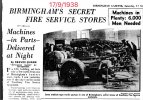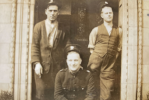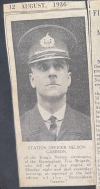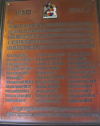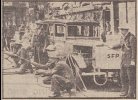Radiorails
master brummie
I am sure the reason the city does not have a commemorative history, as Chris mentions, is due to the structure of the fire service during WW2.
The AFS (Auxilliary Fire Service) was introduced in 1937 under the Air Raid Precautions Act. After hiccups, it got on its feet properly during 1938. It was partially provided for by local authorities but major items were from Government.
The NFS (National Fire Service) was introduced in 1941 being formed from the AFS and the large number (over 1600) of local authority brigades. It was not until 1943 that it was in statute but had by that time certainly earned its laurels. The Fire Services Act of 1947 saw, in 1948, fire brigades reverting to local authority control. One of the difficulties encountered in the early stages of the blitz was a degree of incompatibility of equipment between the various local authority brigades and also with the AFS whose equipment was provided by the local authority. The NFS brought a high degree of standardisation, particularly with the supply and delivery of water at fire. The demands made on fire brigades, in large towns and cities during the bombing meant assistance being brought in from very distant places and each brigade had its own equipment. In many cases it was compatible with closer towns, but large conflagrations meant people attending fires great distances from their home bases. In present ad recent times, it is not uncommon to travel fifty miles or more to assist at very large fires or disasters.
The AFS (Auxilliary Fire Service) was introduced in 1937 under the Air Raid Precautions Act. After hiccups, it got on its feet properly during 1938. It was partially provided for by local authorities but major items were from Government.
The NFS (National Fire Service) was introduced in 1941 being formed from the AFS and the large number (over 1600) of local authority brigades. It was not until 1943 that it was in statute but had by that time certainly earned its laurels. The Fire Services Act of 1947 saw, in 1948, fire brigades reverting to local authority control. One of the difficulties encountered in the early stages of the blitz was a degree of incompatibility of equipment between the various local authority brigades and also with the AFS whose equipment was provided by the local authority. The NFS brought a high degree of standardisation, particularly with the supply and delivery of water at fire. The demands made on fire brigades, in large towns and cities during the bombing meant assistance being brought in from very distant places and each brigade had its own equipment. In many cases it was compatible with closer towns, but large conflagrations meant people attending fires great distances from their home bases. In present ad recent times, it is not uncommon to travel fifty miles or more to assist at very large fires or disasters.




